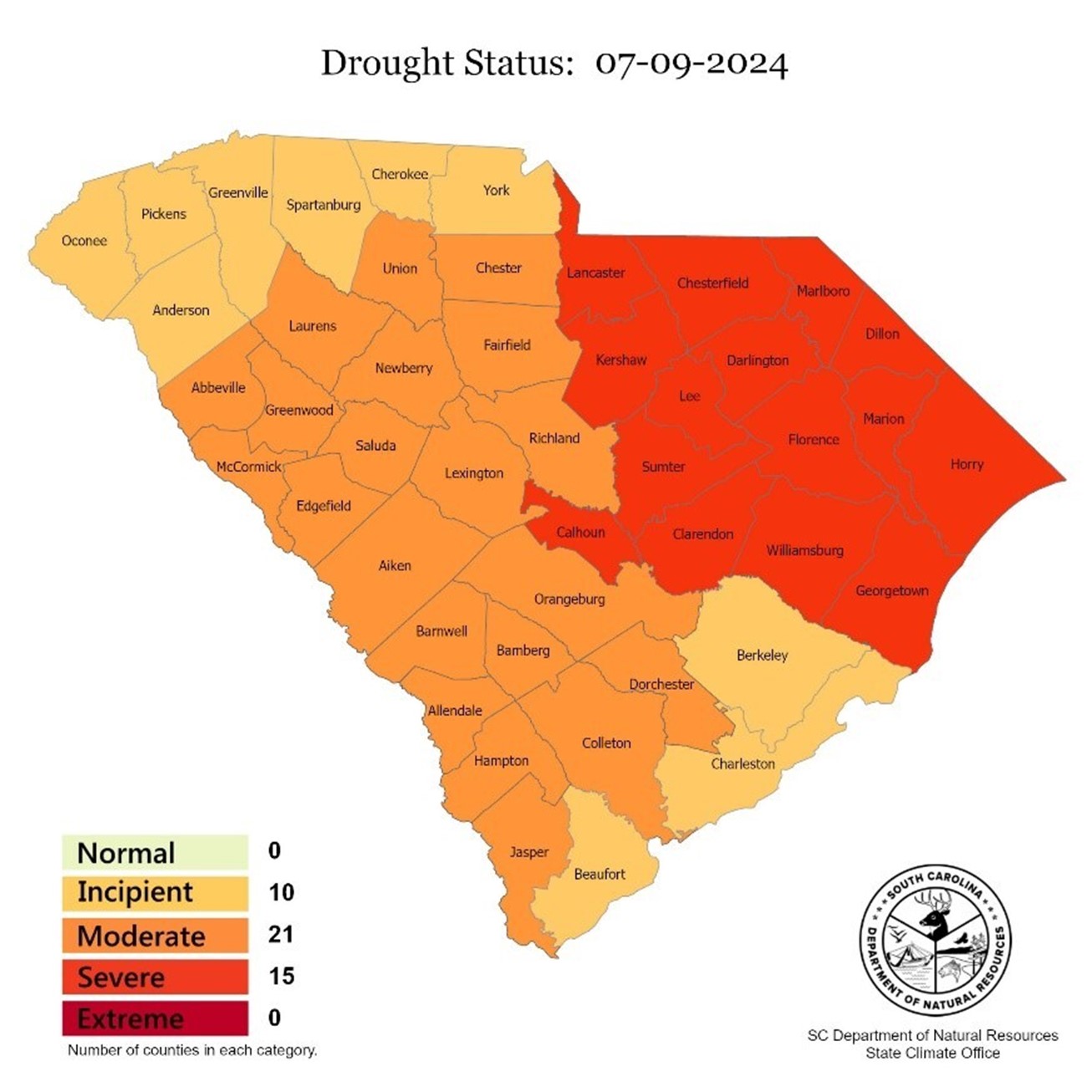South Carolina is currently experiencing higher-than-normal drought levels, as reported by the South Carolina Department of Natural Resources (SCDNR). On Tuesday, SCDNR released new data indicating significant changes in drought status across various counties.
Notably, all counties in the Grand Strand and the Pee Dee regions have been moved from normal to severe drought levels. The decision was based on observed impacts to crops and livestock, rapidly declining stream flows, and an elevated number of wildfires. These conditions highlight the urgency of the drought situation and its effects on the state’s agricultural and natural resources.
Among the affected areas, York County is currently at an Incipient drought status. This status indicates the onset of drought conditions, which may lead to minor impacts on water supplies and agriculture if the situation persists or worsens.
In contrast, Lancaster County has been designated with a severe drought status. This level of drought indicates substantial impacts on the environment, including significant crop and livestock losses, critically low stream flows, and heightened wildfire risks. The severe status necessitates immediate attention and action to mitigate the adverse effects on the community and natural ecosystems.
In response to the updated drought statuses, the SCDNR committee has requested all water systems to review and update their Drought Response Plans. These plans are crucial for managing water resources effectively and ensuring the availability of water during prolonged dry periods.
The SCDNR continues to monitor the situation closely and urges residents to be mindful of water usage and adhere to any water conservation measures implemented by local authorities. The cooperation of the community is essential in mitigating the effects of the drought and safeguarding South Carolina’s natural resources.










